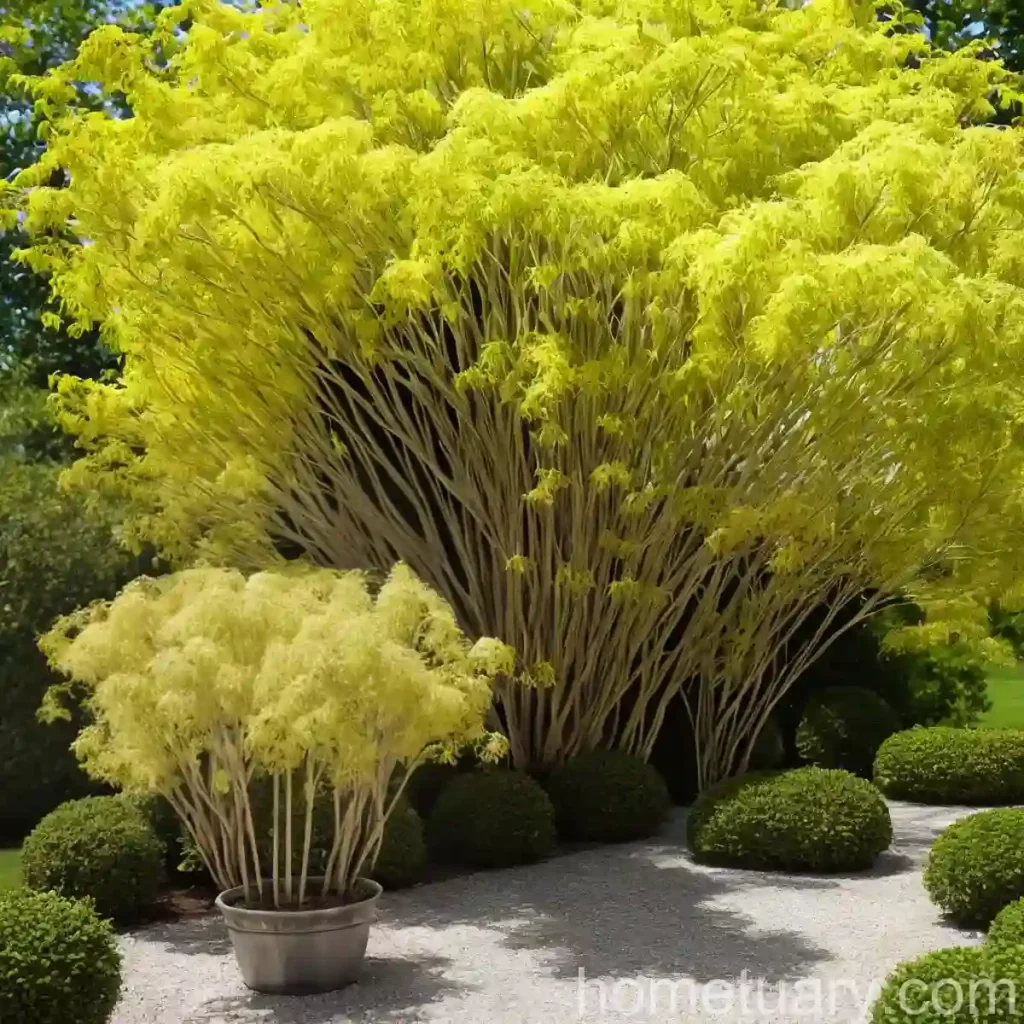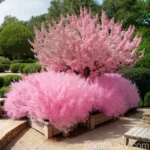Yellowwood (Cladrastis kentukea ‘Sweetshade’)
Plants are an integral part of our environment, providing us with oxygen, food, and beauty. As a plant scientist, I find the immense diversity and unique characteristics of various plant species fascinating. One such remarkable and captivating plant is the yellowwood (Cladrastis kentukea), also known as ‘Sweetshade’. In this comprehensive guide, we will delve into the intricate details of the yellowwood tree, exploring its culture, uses, care requirements, and much more.
What is Yellowwood (Cladrastis kentukea ‘Sweetshade’)?
Yellowwood, scientifically known as Cladrastis kentukea, is a deciduous flowering tree native to the Eastern United States. It belongs to the Fabaceae family and is celebrated for its striking display of fragrant white flowers and vibrant yellow fall foliage. The yellowwood tree has a graceful and spreading form, making it an excellent choice for landscaping and ornamental purposes.
Key Takeaways
Here are the key takeaways before we delve into the detailed aspects of the yellowwood tree, ranging from its culture and uses to its propagation and maintenance:
- Scientific Name: Cladrastis kentukea
- Common Name: Yellowwood, Sweetshade tree
- Family: Fabaceae
- Native Range: Eastern United States
- Notable Features: Fragrant white flowers, yellow fall foliage
- Landscape Uses: Ornamental tree, landscaping, shade tree
Now, let’s explore the various facets of the yellowwood tree, including its culture, care requirements, propagation, and more.
Culture
Understanding the cultural requirements of the yellowwood tree is essential for its successful growth and development. Here’s a detailed look at the key cultural aspects to consider when cultivating the yellowwood tree:
Water
Yellowwood trees exhibit moderate water needs, especially during their establishment phase. Adequate watering is crucial to promote healthy root development and overall growth. However, it is important to ensure that the soil is well-draining to prevent waterlogging, which can be detrimental to the tree’s health.
Sunlight
Yellowwood trees thrive in full sun to partial shade. When selecting a planting site, it is advisable to choose a location that receives ample sunlight for the best flowering and foliage display. However, the tree can also tolerate partial shade, making it adaptable to a variety of garden settings.
Fertilizer
When it comes to fertilization, yellowwood trees benefit from a balanced, slow-release fertilizer applied in early spring. It is important to follow the recommended application rates to avoid over-fertilization, which can lead to excessive foliage growth at the expense of flowering.
Soil
The yellowwood tree prefers well-drained, slightly acidic to neutral soils. It is important to ensure that the soil is loose and fertile to facilitate healthy root development. Amending the soil with organic matter such as compost can improve its texture and nutrient content, creating an ideal growing environment for the tree.
Pruning
Pruning is an essential aspect of yellowwood tree care, helping to maintain its structural integrity, promote flowering, and remove any dead or diseased branches. Here are some key considerations for pruning the yellowwood tree:
- Timing: Pruning is best done during the tree’s dormant season, typically in late winter or early spring before new growth begins.
- Pruning Objectives: The primary objectives of pruning are to remove dead, damaged, or crossing branches, shape the tree for aesthetic purposes, and promote air circulation within the canopy.
- Techniques: When pruning, it is important to use sharp, clean pruning tools to make precise cuts. Care should be taken to avoid over-pruning, as excessive removal of branches can impact the tree’s overall health and vigor.
Propagation
Propagation of the yellowwood tree can be achieved through various methods, including seed propagation, cuttings, and grafting. Here’s an overview of these propagation techniques:
- Seed Propagation: Yellowwood tree seeds can be collected from mature pods and sown in well-draining potting mix. It is important to scarify the seeds to improve germination rates.
- Cuttings: Softwood or hardwood cuttings can be used to propagate yellowwood trees. Softwood cuttings are best taken in early summer, while hardwood cuttings can be collected during the dormant season.
- Grafting: Grafting is another viable method for propagating yellowwood trees, where a scion from a desirable cultivar is grafted onto a suitable rootstock.
Container Popularity
Yellowwood trees are well-suited for container cultivation, making them a popular choice for urban and small-space gardens. When grown in containers, they can be positioned on patios, balconies, or in courtyards, adding a touch of natural beauty to urban environments.
Container Common Diseases
While yellowwood trees are relatively resilient, they can be susceptible to certain diseases, particularly when grown in containers. Some common diseases to watch out for include root rot, powdery mildew, and leaf spot diseases.
Disease Diagnosis
Diagnosing diseases in container-grown yellowwood trees requires careful observation of symptoms such as wilting, leaf discoloration, and abnormal growth patterns. In some cases, submitting a sample to a plant pathology laboratory can help identify the specific pathogens causing the disease.
Common Pests
Yellowwood trees may encounter insect pests such as aphids, scales, and caterpillars. Regular monitoring of the tree’s foliage and trunk can help detect pest infestations early, allowing for timely intervention.
Botanist’s Tips
As a plant scientist, I have gathered some key tips for cultivating and caring for yellowwood trees:
- Selecting Cultivars: When choosing a yellowwood tree for your garden, consider selecting cultivars known for their superior flowering display, fall color, and disease resistance.
- Maintenance Pruning: Regular maintenance pruning is essential to maintain the tree’s shape and health. Avoid heavy pruning that can impact flowering.
Fun Facts
- The wood of the yellowwood tree is prized for its durability and strength, making it valuable for crafting furniture and construction purposes.
- Yellowwood trees provide essential nectar sources for pollinators such as bees and butterflies, contributing to the biodiversity of their habitat.
Links to External Resources
For further information on the yellowwood tree, including cultivation tips, landscaping uses, and biodiversity benefits, explore the following resources:
In conclusion, the yellowwood tree is a stunning and versatile plant that offers a myriad of benefits for landscapes, wildlife, and ecosystems. By understanding its culture, care requirements, and unique characteristics, we can appreciate and celebrate the beauty of this extraordinary tree. Whether it’s the fragrant blooms in spring, the lush foliage in summer, or the golden hues of fall, the yellowwood tree continues to captivate and inspire us with its natural splendor.















